I love gardening, so I don’t mind that some plants demand more of my attention than others.
I’m not mad when I have to grab the pruners to do a little deadheading or when it’s time to do a bit of side-dressing with some manure.
But I have to admit, it makes me happy to know that there are a few reliable species that will do their thing without needing me to help them.

We link to vendors to help you find relevant products. If you buy from one of our links, we may earn a commission.
That’s hostas for you. Reliable and sturdy, popping up in the spring and putting themselves to bed in the fall without any fuss.
But sometimes, pests like deer and slugs try to ruin the routine, treating hostas like their own personal salad bar.
And then there are the really nasty bugs that might turn your hosta plants into mush.
This guide covers 11 common and not-so-common pests that might target your hostas. They are:
11 Common Hosta Pests
One of the many great things about hostas is that they’re resilient. As long as the roots aren’t damaged, established hostas can be completely mowed down, and they’ll return.
I’ve discovered this time and again when my chickens dig up my hostas while foraging, and new leaves pop back up in a few weeks.
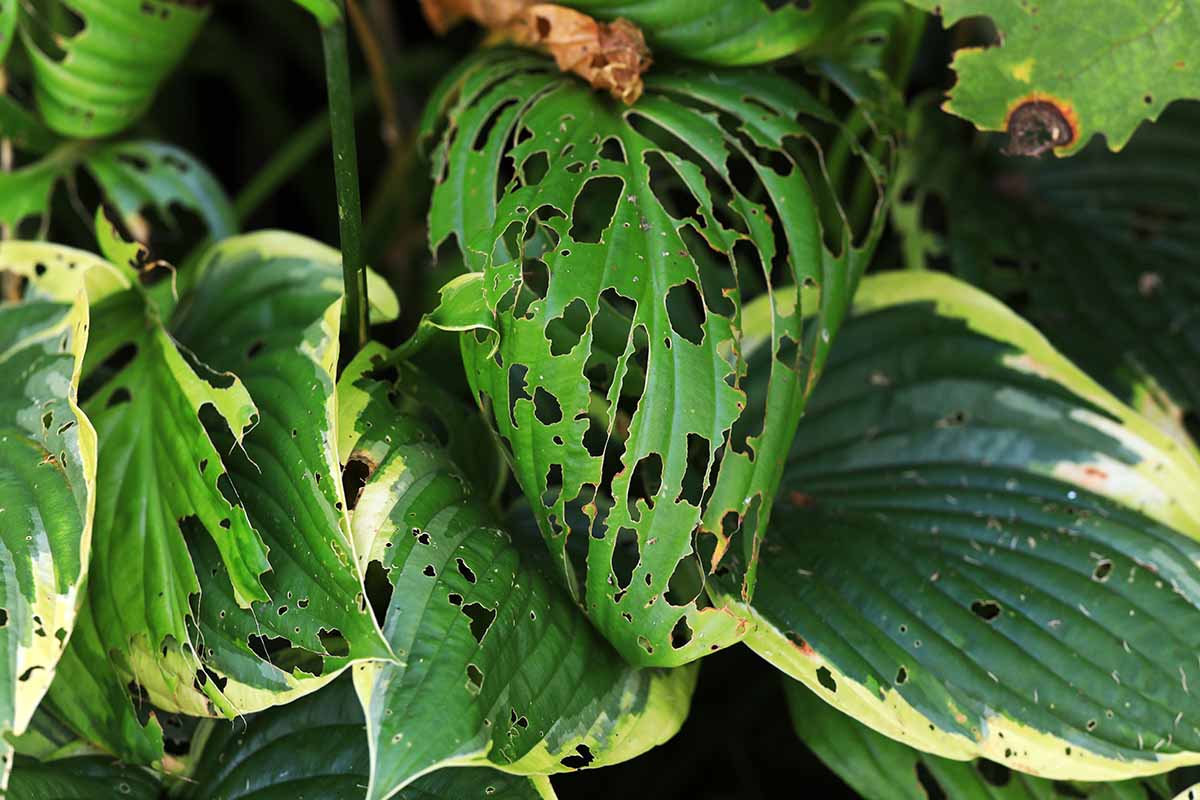
If you eliminate the cause of the damage, even if you think your hosta plant is a goner because all the aboveground bits are gone, they’ll probably return if you give them enough time.
For a refresher on how to care for hostas, check out our growing guide.
It’s also worth noting that most hostas can go a lifetime without any pest problems besides a bit of slug damage. So don’t be overwhelmed by this list.
Let’s start with a pest that you’ve probably already heard of:
1. Aphids
While some plants seem to be covered in aphids every year (I’m looking at you, roses), hostas aren’t often troubled by these pests.
You probably won’t have to worry about them unless your hostas are stressed for another reason, like drought or disease. Even if they do visit, they rarely cause much damage.

If you do have aphids, the leaves of the plant will have yellow stippling or they may turn entirely yellow or brown.
If enough aphids are present, it might cause the infested leaf to collapse. Look for these pests on the undersides of the leaves and along the petioles.
The first step to addressing an aphid situation is to figure out why your hosta is stressed, if that’s the case. Fix that, and you’ll probably send aphids packing.
In the meantime, you can gently dislodge the pests with a stream of water or use one of the other many options out there for eliminating aphids.
2. Black Vine Weevils
Black vine weevils (Otiorhynchus sulcatus) are blackish-brown, half-inch-long snout beetles that feed on the foliage of many herbaceous and woody ornamentals and veggies – including hostas, which are one of their favorites.
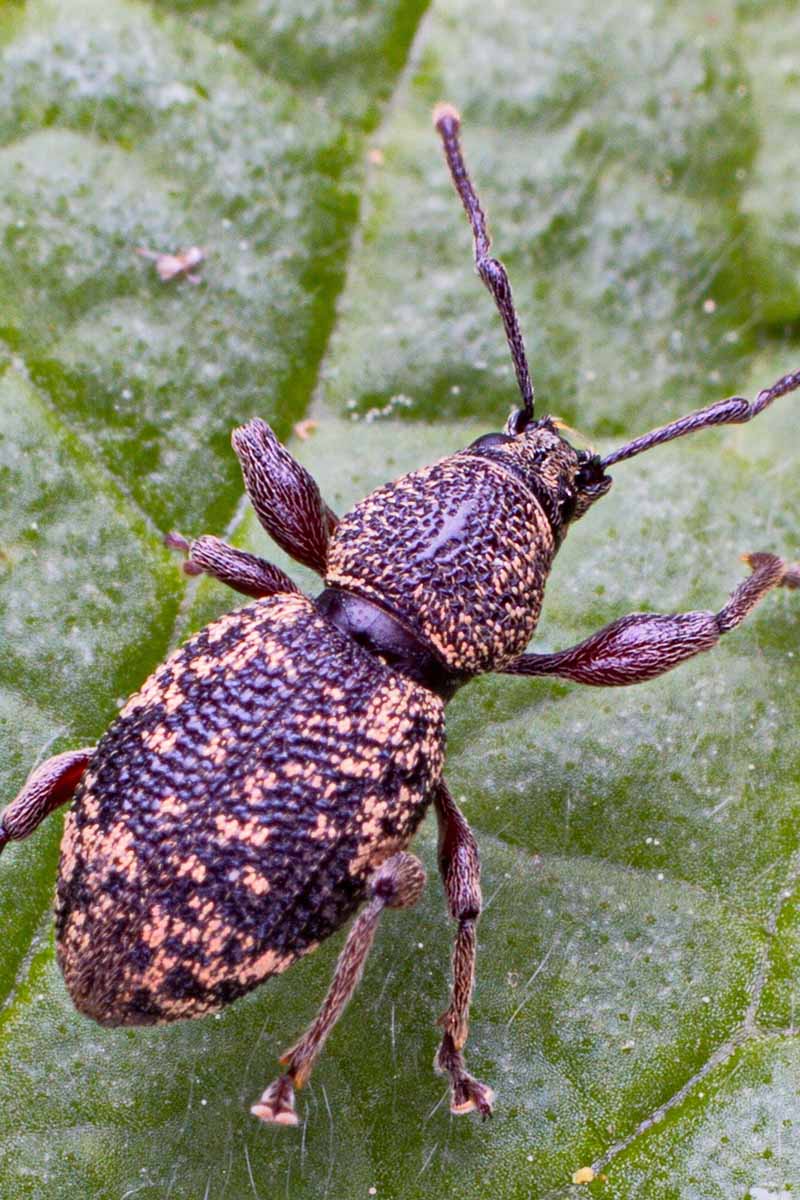
To make matters worse, the half-inch-long, white, cream, or brown grubs that are laid in the soil feed on the roots of the plants.
It’s like your plant is being attacked on two sides.
On the leaves, look for notched feeding on the margins. With enough feeding, the leaves might even become ragged. That’s the best time to act because once the larvae emerge, the damage escalates.
The worst damage happens as the larvae feed on the roots, weakening the hosta and even leading to collapse.
When you see feeding signs on the leaves, go out at night and shake the foliage over a cookie sheet lined with paper, or a cardboard box. Seal and dispose of the adults that you dislodge.
Monterey Take Down Garden Spray
Instead of or in addition to this strategy, you can also spray your hostas with an insecticide containing pyrethrin, like Monterey’s Take Down Garden Spray, which Arbico Organics carries in various sizes as a ready-to-use spray or concentrate.
If it’s the larvae you’re dealing with, beneficial nematodes (Heterorhabditis bacteriophora) are in order.
These microscopic powerhouses enter the larvae and kill them using symbiotic bacteria.
Once again, you can find these at Arbico Organics. They carry packs of five, 10, 50, 250, or 500 million nematodes.
3. Blister Beetles
Blister beetles (family Meloidae) are doubly bad. They can damage your plants, and they can damage you. Plus, they can kill your animals if you have horses, sheep, or cattle.
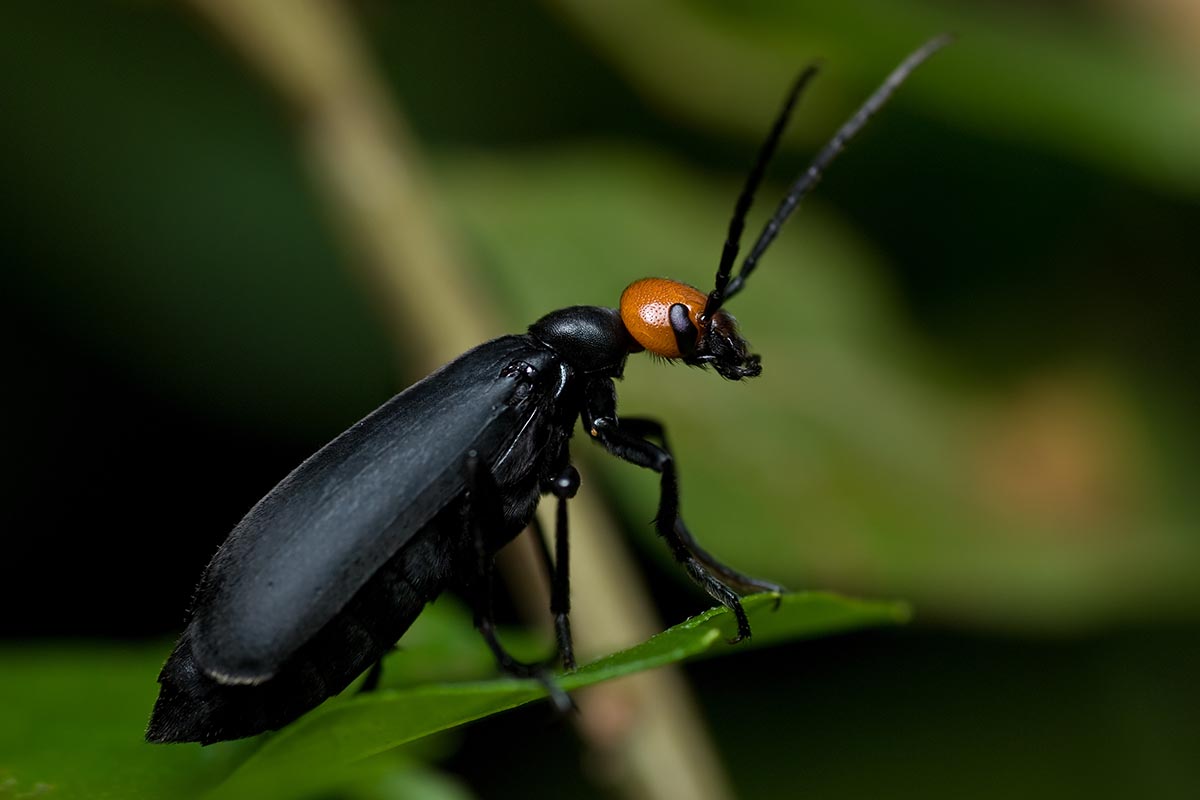
These insects might not appear for several years in a row, and then suddenly, you’re inundated.
They are voracious eaters that will devour most of the herbaceous plants, including weeds, in your garden.
They have a small head on a long neck and can be brown, black, gray, tan, yellow, or a combination of colors. Striped blister beetles (Epicauta vittata) are one of the more common types. They have black and tan wings.
If you’re out weeding and you bump up against one of these, you might develop blisters. Your hostas, on the other hand, will have notched holes in the leaf margins.
Control weeds to limit places for them to hide, and feed and spray the foliage with pyrethrin if you see them. Don’t hand-pick them unless you wear gloves.
4. Cutworms
Cutworms will feed on most herbaceous plants, but for some reason, they love hostas. Maybe the deer and slugs spread the word to them about how fantastic these plants are.
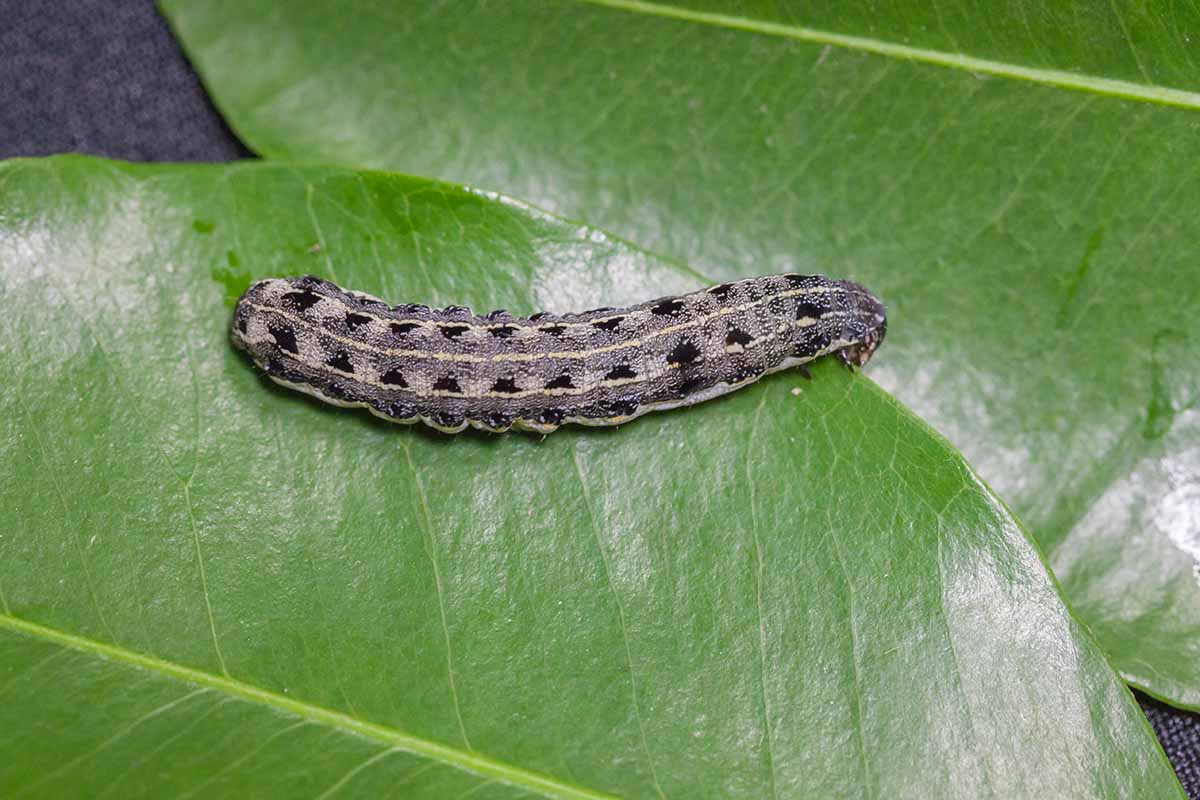
Cutworms are the larvae of moths in the Noctuidae family. They come out at night and chew through the lower part of the petioles of the plants, cutting the leaves off.
Because these pests are so common and destructive, we put together a guide to help you navigate dealing with cutworms.
Fortunately we have a lot of tools we can use, from cleaning up garden beds to applying beneficial nematodes.
5. Deer
I imagine a couple of deer walking placidly on the periphery of my garden, enjoying the last light of dusk, when they suddenly spot my hostas.

The world around them fades, and the hostas come into sharp focus, seemingly illuminated from within.
A choir of angels begins singing as the deer make their way to what is certainly going to be the finest meal of their lives.
Or something like that. Judging by how much deer love these plants, it can’t be that far off from the truth.
When deer eat hostas, they tend to chew them down near the soil line. For types with long petioles, they bite off the leaf and leave behind the stem.
If you have hostas and you have deer living in your neck of the woods, you will have to figure out how to keep the two apart.
We have some good ideas in our guide to dealing with deer, which include suggestions like fencing, repellents, and motion sprinklers.
6. Grasshoppers
Good old grasshoppers (family Acrididae) are some of the most recognizable insects in our gardens.
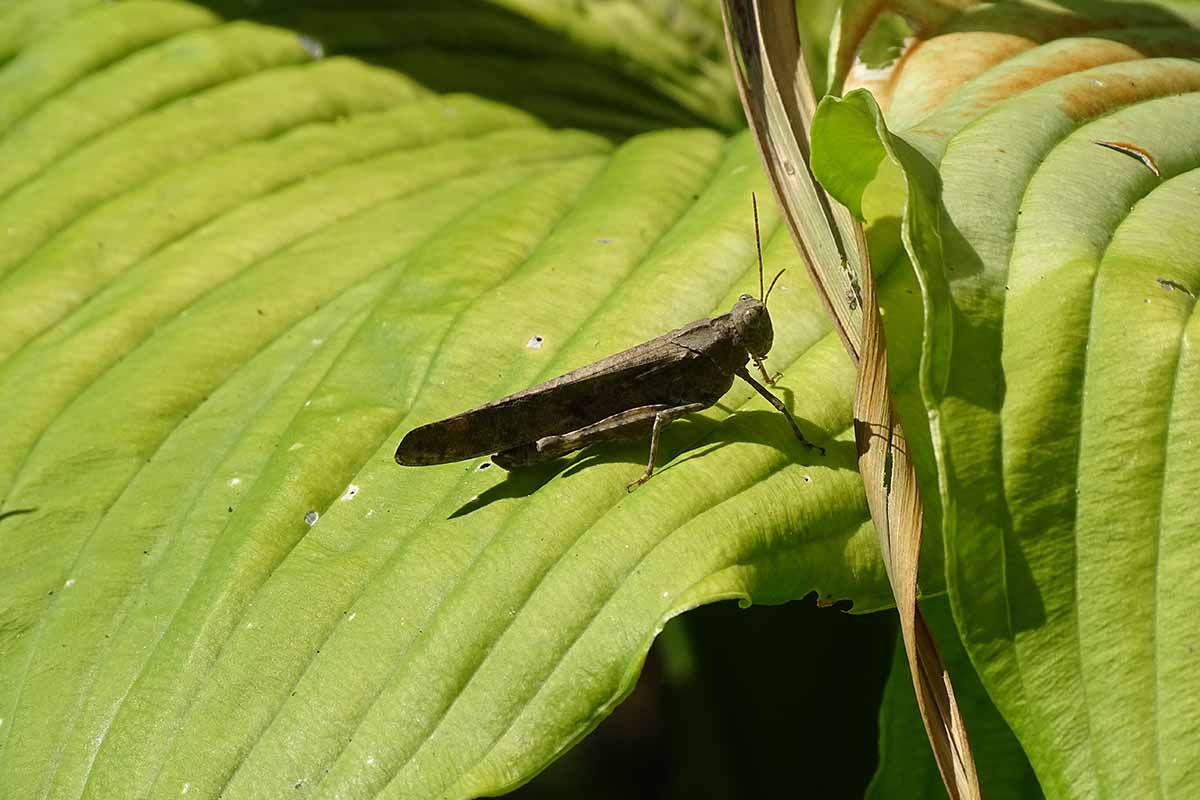
These pests seem to come in waves, smothering a garden one year and entirely absent in another.
They’re pretty much impossible to eliminate from your garden unless you and your whole neighborhood are working together to get rid of them, since they travel in swarms and they’re incredibly mobile.
If you’ve ever watched one hop its way across a garden, you know they can move swiftly.
They don’t thrive in cool, wet weather, so they’re most common in the heat of summer, especially in dry years. When they’re around, they feed on the leaves and petioles of hostas, using their tearing mouthparts.
Nolo Bait has earned a reputation as an effective solution for handling grasshoppers.
But again, they’ll likely just continue coming in from the neighbor’s yard if they like the plants you have on offer.
Nolo Bait is made from wheat bran laced with a fungus called Nosema locustae.
The nice thing about using it is that this pathogen is only deadly to grasshoppers and some other closely-related insects. It won’t hurt kids, pets, or beneficial insects.
Pick up one or five pounds of Nolo Bait at Arbico Organics.
7. Leafcutter Bees
Leafcutter bees (Megachile spp.) are really the least of your worries when growing hostas. These bees in the Megachilidae family are generally solitary.
They don’t tend to focus on just one plant while cutting out leaf material, using their mandibles to make their nests.
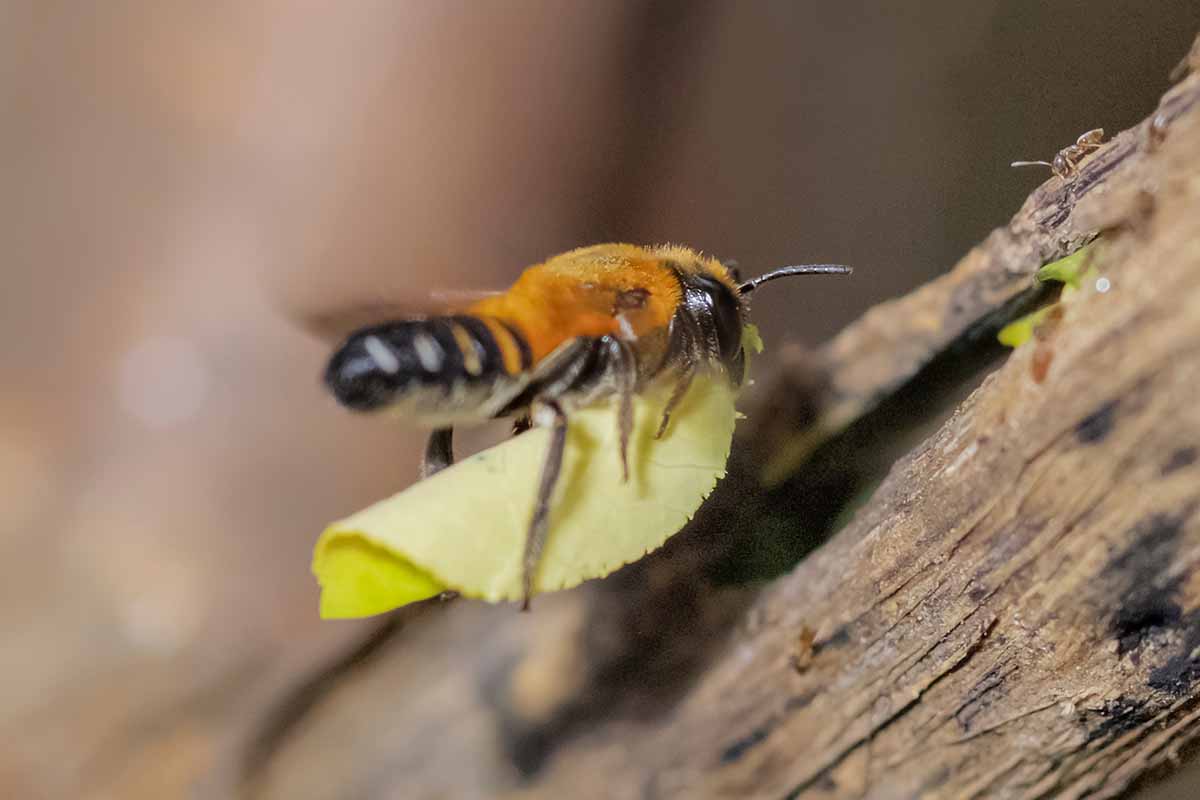
They’re also important pollinators that are native to North America.
So if you see large, oval-shaped or elliptical holes in the margins of the leaves, just wish our little bee friends well and think of all the good pollination they’re doing for you.
Your hosta will send up new leaves to replace the damaged ones in no time.
8. Nematodes
Most of the pests on this list are visible to the naked eye, but not nematodes.
These microscopic roundworms (Aphelenchoides fragariae) are the tiniest pests on this list and also one of the most damaging.
In late spring or early summer, seemingly innocuous yellow streaks develop on some of the oldest leaves of the plant. These patches are only found between the veins, and they might only be an inch or so long.
But over time, more of these streaks develop and they start turning brown. Both the front and the back of the leaf will show discoloration. As things progress, the entire leaf turns brown and dies.
You might assume you’re just seeing some leaf scorch, until the problem has progressed and your whole plant is symptomatic.
Although the symptoms are pretty distinct, you can run a little at-home test to confirm the presence of nematodes.
Cut a leaf open though the discolored part. Take a clear drinking glass and add a thin layer of water in the bottom. Place the leaf in the water with the cut side down.
Wait for at least 30 minutes, but preferably an hour or two. Shine a flashlight into the water and look for itty-bitty squiggles. If you see them, you’ve got nematodes.
Sadly, there’s nothing you can do to rid your plants of them.
You can cut off the infested leaves, but the nematodes will probably continue to spread throughout the plant and to your other specimens in the garden.
You can choose to live with them, since they won’t always kill your plants outright, but they will spread to every single hosta in your yard and probably your neighbor’s yard, too.
If you want to be safe, and don’t want to be accused of spreading this pest throughout your neighborhood, pull the plants and dispose of them.
You can replant hostas in a few years, because the nematodes will die off on their own without a host.
9. Rabbits
As with deer, rabbits seem to view hostas as their own personal buffet. They’ll eat them before they’ll turn to most other things in your garden.

When rabbits eat these plants, it might start out with them nibbling on the margins of the leaves.
As they continue feeding, they’ll eat everything but the petioles, and then they’ll go for the petioles once everything else is gone.
If you fear these adorable lagomorphs are dining out on your hostas, give them the boot with tips from our guide to dealing with rabbits in the garden.
10. Slugs and Snails
If you see holes in your hosta leaves, whether on the margins or the interior, chances are extremely good that slugs or snails did it.

Hostas thrive in cool, moist, shady areas, and guess what kind of environment gastropods prefer?
Yep, you got it– moist, cool, and shady. That’s why gastropods and hostas go hand in hand.
Chances are high that if you grow these plants, you’ll encounter the telltale holes.
In larger plants, you might not even notice the damage and you don’t need to worry much. But younger plants can be stunted or even completely devoured by slugs and snails.
If you don’t already have a favorite method for addressing these slimy invaders, check out our article on managing slug and snail infestations for some helpful information.
11. Voles
While I’ve found that most established plants will return if rabbits or deer devour them, voles are another type of challenge altogether.
Because they eat the roots of your plants, they can kill them outright.
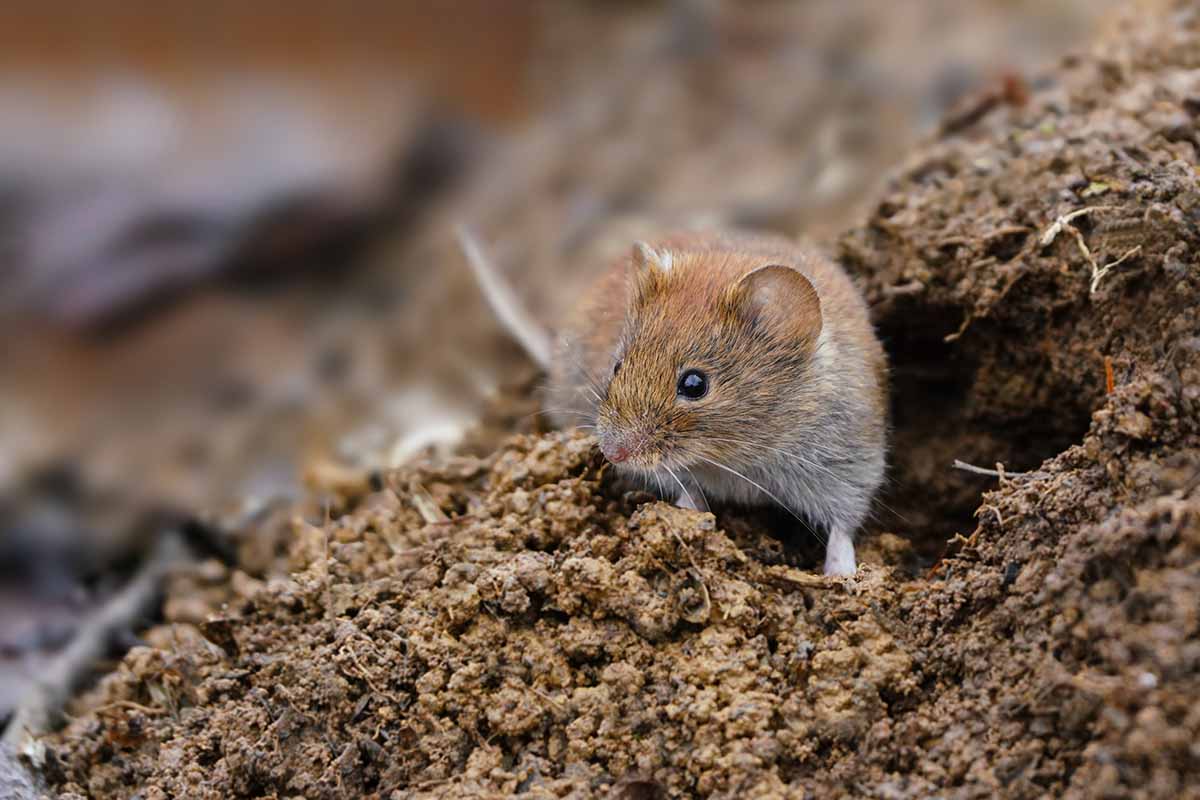
Voles – not to be confused with moles, which are larger and dine on insects – tunnel through the ground, eating anything tasty that they find along the way.
Unless you happen to notice the tunnels or their entrances first, the usual way people realize that they have a vole situation is by finding a collapsed plant.
If your hosta suddenly collapses one day, grab the leaves and give them a gentle pull. If they pop right up with few or no roots attached, it’s a safe bet that a vole made a meal out of them.
I hate to be the bearer of bad news, but once you have these rodents in your garden, it can be quite a challenge to get rid of them.
The first step is to make your yard less inviting.
Limit areas where these critters can hide, like piled mulch and debris. Then, place traps and apply repellents anywhere you can see that they’ve been.
Something like Bobbex-R Animal Repellent will do the job.
It’s available at Arbico Organics in quart-size ready-to-use or concentrate containers and it’s made with a combination of ingredients that several types of pest animals will avoid.
Don’t bother spraying the plants themselves, since it’s the roots the voles are going after. But spray any entrances you see.
Finally, if nothing else works, you might just want to grow your plants in containers.
Or you could bury wire mesh about 10 inches deep and extending up the side of the bed to the surface of the soil in the garden.
Send Pests Packing
There are many pests that will visit your hostas, but not many hostas are visited by pests, unless you’re talking about the ever-present snails and slugs.
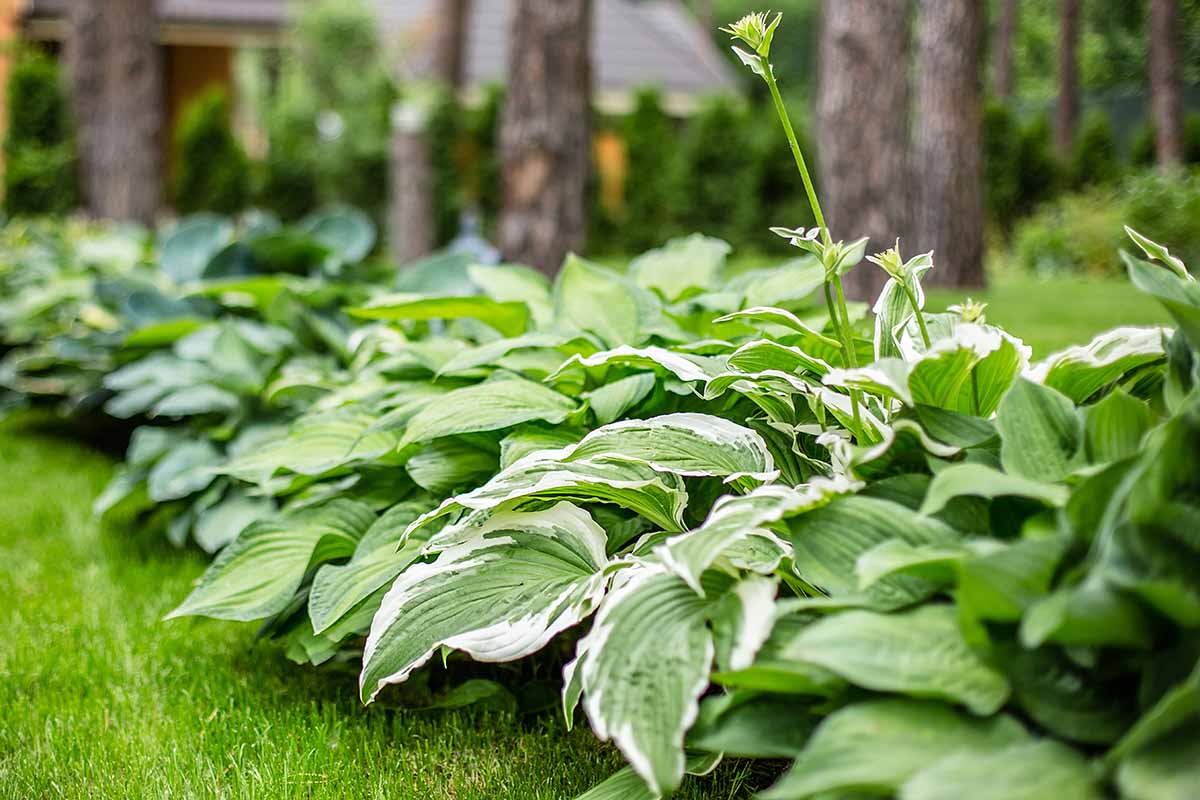
Keep your plants healthy with a good watering routine and try to keep your chickens out of the garden, and you should limit the danger.
Which of these nasties do you think you are dealing with? What symptoms are you seeing? Share the details in the comments so we can help you and others sort the situation out.
The hosta fun doesn’t end here. We have lots more articles to help you make the most of these shade-loving staples. Check these out next:
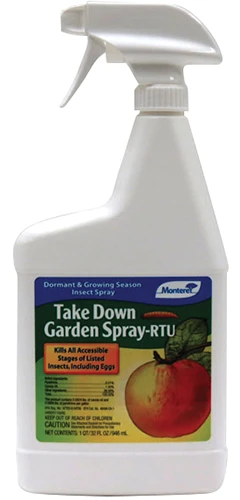
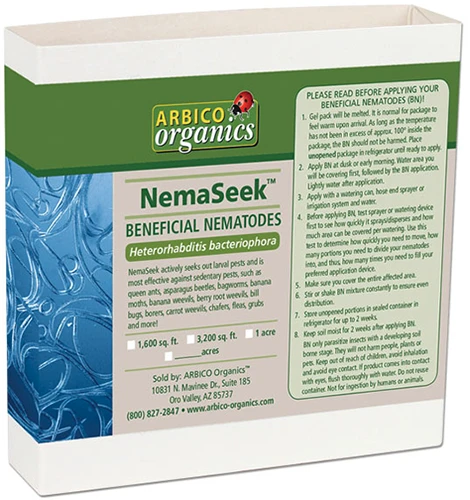
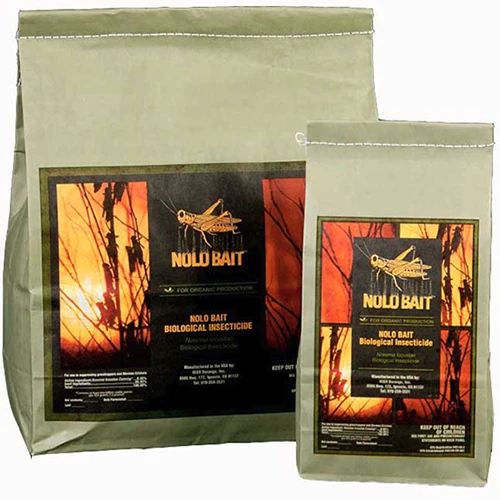
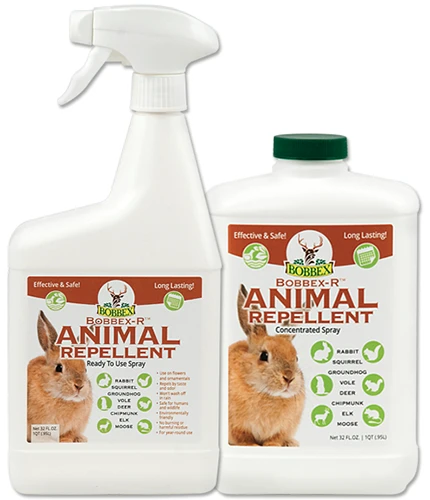
Thank you for your post but I am not sure what is destroying my hosta. I would assume a rabbit or deer, but I live in the middle of a large urban center on the pacific northwest and I have never seen either. I have attached a photo and if you have any suggestions, I would appreciate it.
Hi Gail, you’re right to suspect something like a rabbit or deer. Since you live in an urban area, I would eliminate deer, but rabbits are surprisingly common, even in the cities. It could also be birds. Right now, crows and jays are causing chaos on all kinds of plants. If you could pop a cage or some chicken wire over the plant it will protect them until they can grow a bit larger.
Kristine
While we have had to put out snail/slug bait we haven’t had a problem managing this situation. However, and this sounds bizarre even bringing it up but, this morning we noticed that all of our hostas (about a dozen) were covered in what looked like tiny little flies while none of our other plants in our bed had any! Any thoughts?
God Bless you! Patti
Hi Patti, without seeing the flies themselves, it sounds a bit like whiteflies. Head to our guide on whiteflies to learn about how to identify and deal with them if that turns out to be what they are.